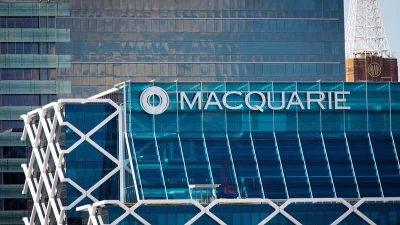Why Industry Super Network's advertising carries risk



Some tough questions have been asked about the Industry Super Network’s (ISN’s) long-running television advertising in recent weeks – a number of times in the Federal Parliament, and then at the Association of Financial Advisers (AFA) annual conference on the Gold Coast.
The questions asked in the Federal Parliament were directed towards the regulators: the Australian Securities and Investments Commission (ASIC) and the Australian Prudential Regulation Authority (APRA). Questions at the AFA conference were directed at ISN chief executive, David Whiteley. Those looking for definitive answers would have been bitterly disappointed.
Whiteley declined to specify precisely how much his organisation and its industry fund constituents were spending on television advertising, while officials from both APRA and ASIC also managed to sidestep the immediate issue.
However, Tasmanian Liberal Senator David Bushby succeeded in throwing a new element into the debate around ISN advertising when he queried whether the industry super funds had the capital backing necessary to handle any legal action arising from false and misleading advertising.
Bushby asked APRA’s deputy chairman Ross Jones whether the regulator had made any estimates or assessments of the prudential risk for trustees who contributed member funds to advertising campaigns which might result in legal claims for false and misleading advertising.
“Essentially, is APRA confident that trustees have sufficient capital or adequate insurance cover to meet member claims in the instance that claims along those lines arise?” he asked.
Jones said, “The simple answer to that would be no, because a number of funds have no capital. If there are issues with funds that would lead to members taking action against the trustees or the fund and the fund has no capital, there is clearly an issue”.
What is more, Jones acknowledged that it was unlikely such a liability carried by a fund would be covered by the new Stronger Super legislation which provided for an operational risk reserved, saying “given that that is linked to operational risk, I am not quite certain how that would work if members sued the fund”.
Bushby’s question should have set off alarm bells both within APRA and the ISN, because it places on Parliamentary record the possibility of superannuation fund members suing individual funds because of the tenor of advertising suggesting people transferring to those funds will ultimately be better off.
In circumstances where at least one high profile industry fund has failed to perform to expectations and where a number of law firms have signalled their willingness to initiate action in the financial services industry, Bushby’s question would seem to have plenty of foundation.
The simple message for the ISN is that a litigation risk exists if the escalator does not go as high as its advertisements suggest.
Recommended for you
In this episode of Relative Return Insider, host Keith Ford and AMP chief economist Shane Oliver unpack the RBA’s decision to keep the cash rate on hold in the face of rising inflation and whether the governor’s hawkish tone is a sign of things to come.
In this episode of Relative Return Insider, host Keith Ford and AMP chief economist Shane Oliver discuss the September quarter GDP figures, which show Australia’s economy regaining momentum.
In this new episode of The Manager Mix, host Laura Dew speaks to Haley Devine, head of wealth management at MaxCap Group, to delve into private credit and commercial real estate.
In this new episode of The Manager Mix, host Laura Dew speaks to Benjamin Leung, head of systematic investments at Macquarie Asset Management, to understand the use of systematic investments.







